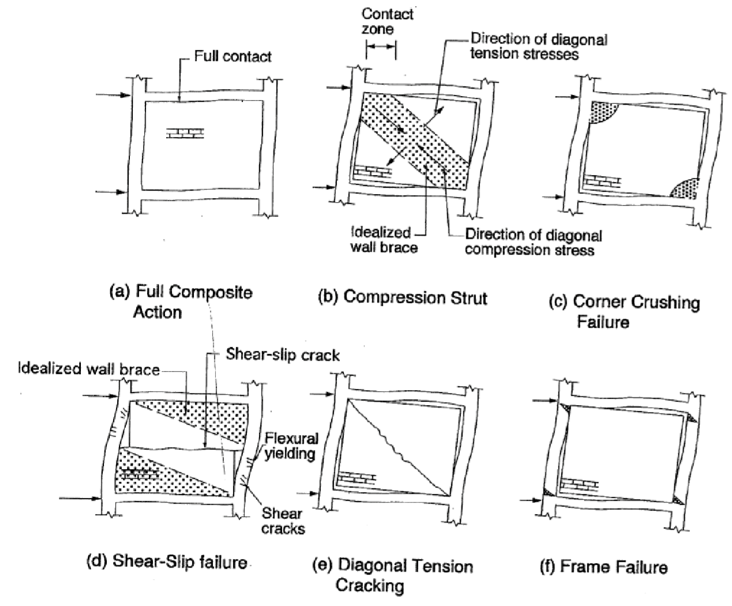G. C. Hart1, A. Jain2 and B. Arya3
- PhD, CE, SECB, Professor Emeritus, Dept of Civil Engineering, University of California, Los Angeles, CA, and Managing Principal, Weidlinger Associates Inc., Marina del Rey, CA, USA, hart@wai.com
- PhD, PE, SECB, Principal, Weidlinger Associates Inc., Marina del Rey, CA, USA, jain@wai.com
- PhD, PE, SECB, Senior Project Engineer, Weidlinger Associates Inc., Marina del Rey, CA, USA, arya@wai.com
ABSTRACT
Concrete masonry units provide an excellent infill material for reinforced concrete frames in earthquake and hurricane regions. The book entitled “Masonry Structures Behaviour and Design” by Drysdale and Hamid, 2008 Edition [1], Chapter 11, provides excellent reading on this lateral force resisting system. Historically the emphasis was on strength or life safety laboratory testing (Observation) and computer modelling (Simulation). This focus on the Life Safety Limit State has been expanded with the movement toward performance based design which focuses on other limit states. This paper focuses on the very important topic of damage investigation of the infill frames after an earthquake or hurricane. In many cases the infill frame has been displaced to drift levels considerably less than life safety drift amplitudes and limit states other than life safety. This paper also focuses on these limit states and particularly the very important insurance topic of the return of the infill frame to its pre-earthquake or hurricane condition.
KEYWORDS: concrete masonry, infill frames, earthquake, hurricane, insurance
C4-2



